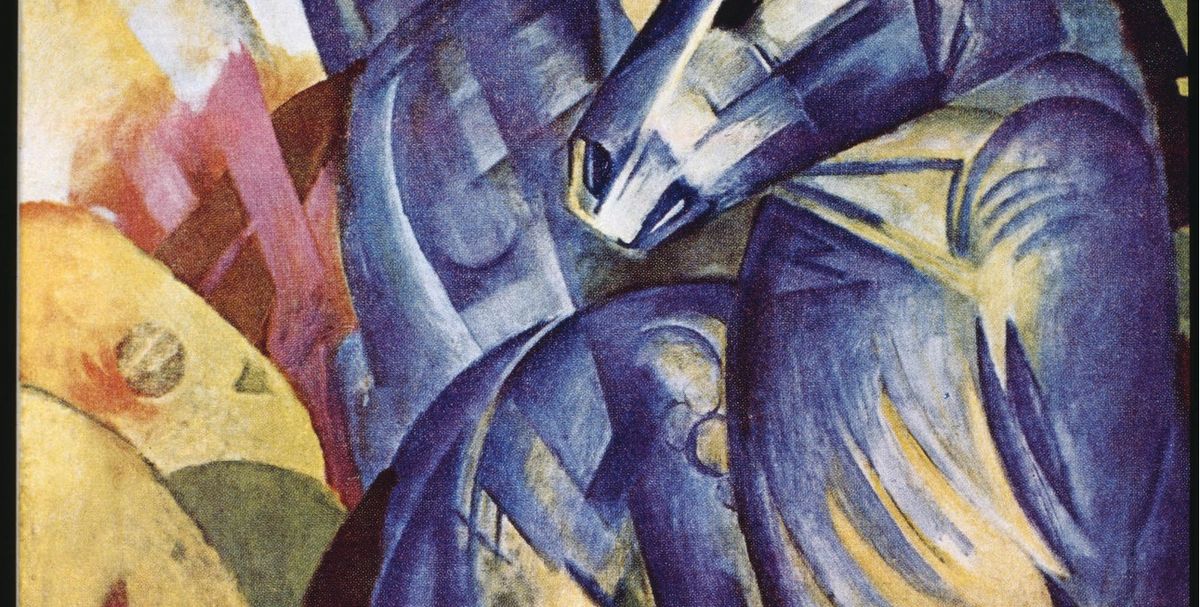It has been missing since the end of the Second World War, but one of the greatest German Expressionist paintings may have survived, hidden away in Russia.
Franz Marc’s The Tower of Blue Horses (1913) has not been seen in public since a Nazi exhibition of “degenerate” art in Munich in 1937, but the curators of two shows opening in Germany this month believe that the picture could well survive. They are organising their exhibitions in homage to the missing masterpiece and also in the hope of raising public awareness of the painting’s disappearance.
Marc painted the work just before the First World War. Six years later, it was acquired by Berlin’s Nationalgalerie, as one of the finest works by a radical Blaue Reiter (blue rider) artist. The Blaue Reiter group, led by Marc and the Russian-born artist Wassily Kandinsky, regarded blue as a spiritual colour and admired horses and riders.
In 1936, Marc’s work was declared “degenerate” by the Nazis, and the following year, The Tower of Blue Horses was displayed in the infamous Munich exhibition. This led to protests from war veterans, because Marc had died fighting for Germany in 1916. The painting was then withdrawn from the show, and it was seized by Hermann Göring, Hitler’s deputy, in 1938.
After Germany’s defeat in 1945, the picture went missing. Curators believe that it may have survived because of several reports of sightings. Edwin Redslob, an art historian and the pre-war head of the German government’s culture agency, wrote many years later that he had seen the painting in early 1945 in the Haus am Waldsee, a villa in Berlin occupied by the leader of the Nazi film organisation. In 1961, the journalist Joachim Nawrocki reported having seen the picture in the winter of 1948-49 in a nearby youth centre, formerly the home of the police chief Graf von Helldorf. In 2001, the German Expressionist collector Jan Ahlers said that he had been offered the painting for sale, although he was not shown the work.
Public appeal Katja Blomberg, the organiser of the Berlin half of the exhibition on the painting, believes that the canvas was probably seized by Soviet troops after the end of the war and taken to Russia. It may survive there, hidden in a museum store. Michael Hering, the curator of the other part of the show in Munich, agrees, adding that “another possibility is that it is in a cellar or an attic in Germany”.
The exhibition, which will present contemporary artists’ responses to Marc’s masterpiece, takes place in two appropriate venues: the Pinakothek der Moderne in Munich (the city where Marc painted the picture) and the Haus am Waldsee in the south-west suburbs of Berlin (where it was “sighted”). Viktoria Binschtok and Norbert Bisky are among the 20 contemporary artists who have been invited to respond to the painting, its history and its status as a totemic object.
• Missing, Franz Marc’s The Tower of Blue Horses: Contemporary Artists in Search of a Lost Masterpiece, Haus am Waldsee, Berlin (until 5 June); Pinakothek der Moderne, Munich (until 5 June). The show is likely to travel to the Museum Boijmans van Beuningen, Rotterdam


